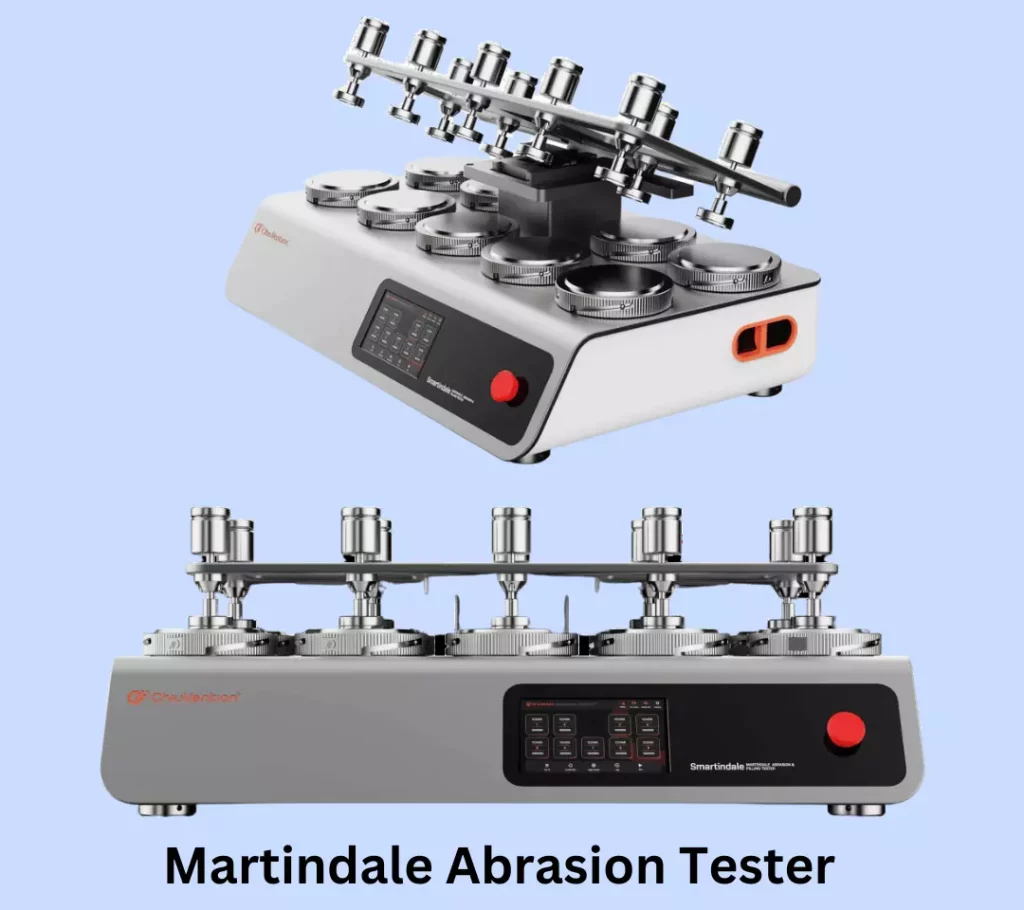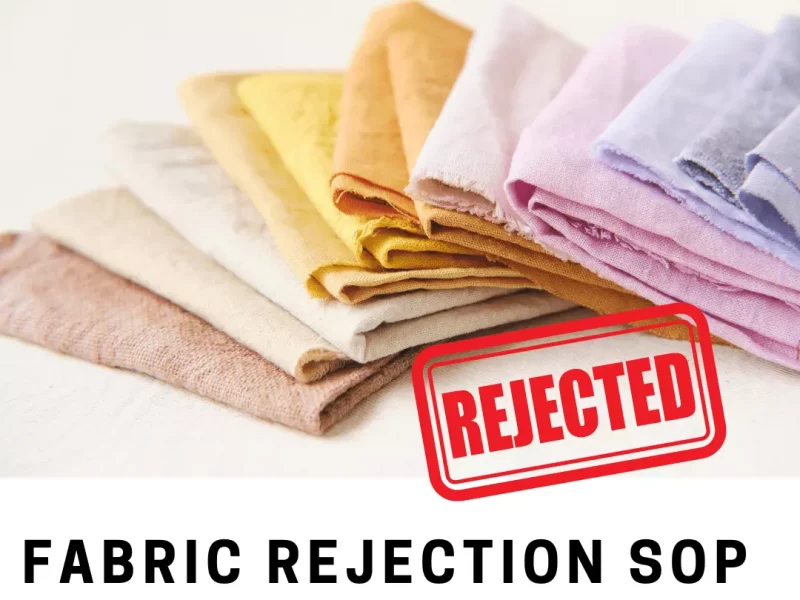The Martindale Abrasion Tester is an essential tool in the textile and fabric industry, used to evaluate various materials’ durability and wear resistance. In this article, we will explore the features and benefits of the Martindale Abrasion Tester and delve into its significance in assessing material quality. Whether you are a manufacturer, designer, or consumer, understanding the Martindale Abrasion Test can provide valuable insights into the performance and longevity of fabrics.

Introduction to Martindale Abrasion Tester
The Martindale Abrasion Tester, also known as the Martindale Test or the Martindale Abrasion and pilling tester machine, is a widely recognized machine used to simulate and measure the abrasion resistance of textiles. Developed by James A. Martindale in the early 20th century, this testing equipment has become an industry standard for assessing the durability and quality of fabrics.
How does the Martindale Abrasion Tester work?
The Martindale Abrasion Tester subjects the fabric sample to mechanical abrasion under controlled conditions. The testing apparatus consists of a rotating circular disc covered with abrasive material, which rubs against the fabric surface in a circular motion. The applied pressure and the number of rotations determine the intensity of the abrasion.
Importance of the Martindale Abrasion Test
The Martindale Abrasion Test is crucial for manufacturers and designers to assess the wearability and durability of textiles. By replicating real-life conditions, the test helps predict how a material will perform over time, especially in high-stress areas such as upholstery, clothing seams, and automotive interiors. It allows manufacturers to make informed decisions about material selection, ensuring that the final product meets the desired quality standards.
Types of materials tested with the Martindale Abrasion Tester
The Martindale Abrasion Tester is suitable for testing a wide range of materials, including woven, knitted, non-woven, carpets, leather, and synthetic materials. It can evaluate the performance of both natural and synthetic fibers, providing valuable insights into their resistance to wear and tear.
Advantages of using the Martindale Abrasion Tester
One of the significant advantages of the Martindale Abrasion Tester is its ability to simulate real-world conditions in a controlled environment. By subjecting fabrics to repeated abrasion, it allows for the assessment of long-term wear resistance, which is critical for ensuring the durability of textiles. Furthermore, the Martindale Test provides a standardized method for comparing different materials, allowing manufacturers to select the most suitable fabric for specific applications.
Limitations of the Martindale Abrasion Tester
While the Martindale Abrasion Tester is a valuable tool for assessing material durability, it does have certain limitations. It primarily measures two-dimensional abrasion and does not account for three-dimensional wear. Additionally, the test may not accurately represent certain types of abrasive actions that fabrics may encounter in real-world scenarios.
Another limitation of the Martindale Abrasion Tester is that it focuses on a specific type of abrasion, known as “flex abrasion,” which occurs when two surfaces rub against each other. This test method may not fully capture the effects of other types of wear, such as abrasion caused by friction with rough surfaces or contact with sharp objects.
Moreover, the Martindale Test does not account for other factors that can impact the durability of a material, such as exposure to sunlight, moisture, or chemicals. These external factors can significantly affect the performance of fabrics in practical applications, but they are not considered in the Martindale Abrasion Test alone.
Understanding the limitations of the Martindale Abrasion Tester is crucial for obtaining comprehensive insights into material durability. It is advisable to complement the Martindale Test with other testing methods and real-world observations to ensure a more accurate assessment of fabric performance.
Understanding the test results
Interpreting the test results from the Martindale Abrasion Tester requires an understanding of the parameters involved. The primary measurement obtained from the test is the number of cycles completed before visible wear or fabric failure occurs. This is typically referred to as the “abrasion resistance” or “abrasion rating” of the material.
In addition to the number of cycles, the appearance of the fabric after testing is also evaluated. Common characteristics observed include pilling, fuzzing, color change, and fabric integrity. These visual cues provide valuable information about the fabric’s ability to withstand abrasion and maintain its aesthetic appeal.
It’s important to note that different industries and applications may have specific requirements and standards for acceptable abrasion resistance. Therefore, understanding the context in which the fabric will be used is essential for accurately interpreting the test results and making informed decisions.
Factors to consider when choosing a Martindale Abrasion Tester
When selecting a Martindale Abrasion Tester for your testing needs, several factors should be taken into consideration:
Test Method: Ensure the tester follows internationally recognized standards such as ASTM D4966 or ISO 12947. Compliance with these standards ensures consistency and reliability of test results.
Load and Pressure: Consider the range of loads and pressures that the tester can apply. Different fabrics may require different pressure levels to simulate real-life wear conditions accurately.
Test Heads and Abrasives: Evaluate the variety of test heads and abrasives available for the tester. Different materials may require specific test heads or abrasives to accurately replicate the intended wear conditions.
Sample Size and Mounting: Check the maximum sample size that the tester can accommodate. It’s also important to ensure that the mounting mechanism allows for secure and consistent clamping of the fabric sample.
Testing Software and Data Management: Consider the availability of testing software that can automate the testing process, capture test data, and generate comprehensive reports. Efficient data management capabilities can streamline testing procedures and facilitate analysis.
Proper maintenance and calibration of the Martindale Abrasion Tester
Proper maintenance and calibration of the Martindale Abrasion Tester are essential to ensure accurate and reliable test results. Regular maintenance includes cleaning the machine, checking for any signs of wear or damage, and lubricating moving parts as necessary.
Calibration of the tester should be performed periodically to verify its accuracy. This involves comparing the results obtained from the tester with reference samples of known abrasion resistance. Calibration ensures that the tester is functioning correctly and provides consistent and trustworthy data.
Following the manufacturer’s guidelines for maintenance and calibration procedures is recommended. If unsure, consulting with the manufacturer or a qualified technician can help ensure that the tester remains in optimal condition.
Comparison with other abrasion testing methods
While the Martindale Abrasion Tester is widely used and recognized, it is not the only method for evaluating fabric abrasion resistance. Other standard abrasion testing methods include the Taber Abrasion and Wyzenbeek Test.
The Taber Abrasion Test uses a different principle, involving a rotating flat disc or wheel that rubs against the fabric sample. This test method measures the weight loss or the number of cycles completed before reaching a specified endpoint. It is commonly used for testing hard surfaces, such as coatings, laminates, and furniture finishes.
The Wyzenbeek Test, on the other hand, is specifically designed for upholstery fabrics. It stimulates the abrasion caused by the back-and-forth motion of a person sitting on a chair or sofa. This test method measures the number of double rubs until fabric failure occurs.
Each abrasion testing method has advantages and limitations, and the choice of method depends on the industry’s specific requirements and application. It is important to consider factors such as test conditions, sample preparation, and correlation with real-world wear when selecting the most appropriate test method.
Typical applications of the Martindale Abrasion Test
The Martindale Abrasion Test is widely used in various industries that deal with fabrics and textiles. Some typical applications include:
Apparel and Fashion: The Martindale Test helps assess the durability of fabrics used in clothing, ensuring they can withstand repeated wear and washing cycles.
Upholstery and Furniture: Fabrics used in upholstery and furniture are subjected to constant friction and abrasion. The Martindale Abrasion Test helps determine their resistance to wear, maintaining the appearance and longevity of the furniture.
Automotive Interiors: Car seats, carpets, and other interior components are exposed to continuous abrasion. Testing these materials with the Martindale Abrasion Tester ensures they can withstand the rigors of everyday use.
Contract Textiles: Fabrics used in commercial environments such as hotels, offices, and healthcare facilities must withstand heavy use. The Martindale Test helps evaluate their performance and durability in high-traffic areas.
Technical Textiles: Materials used in applications such as protective clothing, outdoor gear, and industrial textiles undergo rigorous conditions. The Martindale Abrasion Test ensures they meet the required performance standards.
Key manufacturers and suppliers of Martindale Abrasion Testers
Several manufacturers specialize in producing Martindale Abrasion Testers. Some well-known companies in this field include:
- James Heal: James Heal is a reputable manufacturer of textile testing instruments, including Martindale Abrasion Testers. They offer a range of models with advanced features and customizable options.
- SDL Atlas: SDL Atlas is a leading provider of textile testing equipment, offering Martindale Abrasion Testers suitable for various applications. Their machines are known for their reliability and accuracy.
- Taber Industries: Taber Industries is a trusted name in the field of material testing, including abrasion testing. They offer Martindale Abrasion Testers that are widely used in the industry. Their machines are known for their robust construction and precise testing capabilities.
- Presto Stantest: Presto Stantest is a renowned manufacturer and supplier of textile testing instruments, including Martindale Abrasion Testers. They offer a range of models suitable for different testing requirements.
- TESTEX: TESTEX is a global provider of textile testing equipment, offering Martindale Abrasion Testers that comply with international standards. Their machines are known for their accuracy and user-friendly features.
These manufacturers provide Martindale Abrasion Testers and offer technical support, calibration services, and training to ensure proper usage and maintenance of the equipment.
Tips for performing the Martindale Abrasion Test
To obtain accurate and meaningful results from the Martindale Abrasion Test, consider the following tips:
Sample Preparation: Ensure fabric samples represent the tested material and are prepared according to the relevant standards. Sample dimensions and mounting techniques should be consistent to minimize variations.
Test Conditions: Follow the specified test conditions, including the applied load, the number of cycles, and the type of abrasive material. These parameters should reflect the intended end-use conditions of the fabric.
Record Keeping: Maintain detailed records of each test, including the sample information, parameters, and results. This documentation helps track the performance of materials over time and facilitates comparison between different samples.
Repeat Testing: Perform multiple tests on the same fabric sample to establish the reproducibility of results. This helps account for variations due to sample positioning, machine calibration, or other factors.
Interpretation of Results: Consider the test results in conjunction with other relevant factors such as industry standards, end-use requirements, and the specific application of the fabric. The abrasion resistance rating should be interpreted within the material’s intended use.
By following these tips, fabric manufacturers and researchers can ensure reliable and meaningful results from the Martindale Abrasion Test, enabling them to make informed decisions about material selection and improve product quality.
Conclusion
The Martindale Abrasion Tester is a valuable tool for evaluating textiles’ durability and wear resistance. It provides manufacturers, designers, and consumers with critical information about the performance and longevity of fabrics. Understanding the Martindale Abrasion Test, its limitations, and its applications is essential for making informed decisions regarding material selection and product development.
While the Martindale Abrasion Tester has its limitations, it offers valuable insights into fabric durability when used in conjunction with other testing methods and real-world observations. Proper maintenance, calibration, and adherence to testing guidelines are crucial for obtaining accurate and reliable results.
By harnessing the capabilities of the Martindale Abrasion Tester, fabric manufacturers can ensure that their products meet the highest standards of quality, durability, and customer satisfaction.
FAQs
1. How does the Martindale Abrasion Test simulate real-world conditions?
The Martindale Abrasion Test simulates real-world conditions by subjecting fabric samples to repeated abrasion using a rotating circular disc covered with abrasive material. This replicates the friction and wears that fabrics experience during everyday use.
2. Can the Martindale Abrasion Tester assess the durability of leather materials?
Yes, the Martindale Abrasion Tester can assess the durability of leather materials. It provides valuable insights into the abrasion resistance and wear performance of leather, making it an essential tool for manufacturers in the leather industry.
3. What is the significance of pilling in the Martindale Abrasion Test?
Pilling is essential when conducting the Martindale Abrasion Test as it provides valuable insights into the fabric’s durability and wear resistance. Pilling refers to forming tiny balls or fibers on the fabric surface due to abrasion.
The presence and severity of pilling during the test can indicate how well the fabric will withstand everyday wear and tear. Fabrics with higher pilling tendencies may experience reduced durability and a decline in aesthetic appearance.
By assessing the pilling behavior of fabrics during the Martindale Abrasion Test, manufacturers can gain valuable information about the fabric’s ability to maintain its visual appeal and structural integrity. This knowledge allows them to make informed decisions about material selection and production processes.
It’s important to note that pilling is influenced by various factors, including the fabric’s fiber composition, yarn structure, and surface finish. Different fabric types may exhibit varying degrees of pilling, and it’s crucial to consider the intended use and end-user expectations when interpreting the test results.
Furthermore, standards and guidelines specific to each industry often define acceptable levels of pilling. For instance, apparel fabrics intended for high-quality garments may need to exhibit minimal pilling even after extended use. In contrast, fabrics used in more casual or utilitarian applications may have a slightly higher tolerance for pilling.
During the Martindale Abrasion Test, fabric samples are evaluated for the occurrence of pilling and its severity and distribution. This analysis provides a comprehensive understanding of how the fabric will perform in real-world scenarios.
Manufacturers can ensure that their fabrics meet the desired durability standards, aesthetics, and customer satisfaction by considering the significance of pilling in the Martindale Abrasion Test. It allows them to make informed decisions regarding material selection, production processes, and quality control measures.
In conclusion, the presence and extent of pilling observed during the Martindale Abrasion Test play a crucial role in evaluating the fabric’s wear resistance and overall performance. By carefully analyzing and addressing pilling tendencies, manufacturers can produce fabrics that meet the demands of various industries and deliver high-quality products to consumers.


